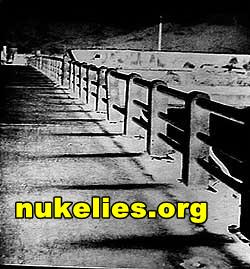rerevisionist wrote:Exorcist - highly original work and convincing, though it ideally needs (imho) examination of the original prints (or better still negatives) to check more certainly that the steel is drawn in; the online versions that I've seen aren't very high resolution.
I doubt whether there would be any mileage in this. These fakes were probably produced as follows. Make enlarged prints of the conventional explosive/incendiary damage photos of Hiroshima. Draw in the steelwork on the enlarged print and add cuttings from other photos eg the tranformer parts. Take a photo of the montage. The original "artwork" would then be destroyed. A "photo of a photo" would explain the fuzzy low resolution and lack of clear detail present in many of these fakes.
The low resolution is desirable from the faker's point of view but is a double edged sword. These photographs were supposed to be taken by professionals. We are justified in asking "How did these "professionals" manage to produce so many photographs in which the focusing and detail are so poor"? I think there is only one believable answer to that!
Unfortunately for the fakers the rules of perspective still apply to fuzzy photos of photos. Neither will a fuzzy photo hide their lack of understanding of building structure. I'll post an example of an obvious "montage" in my next photo analysis post.
It's the Shimonura Watch Shop which also features in the US Strategic Bombing Survey as Building No. 46.

